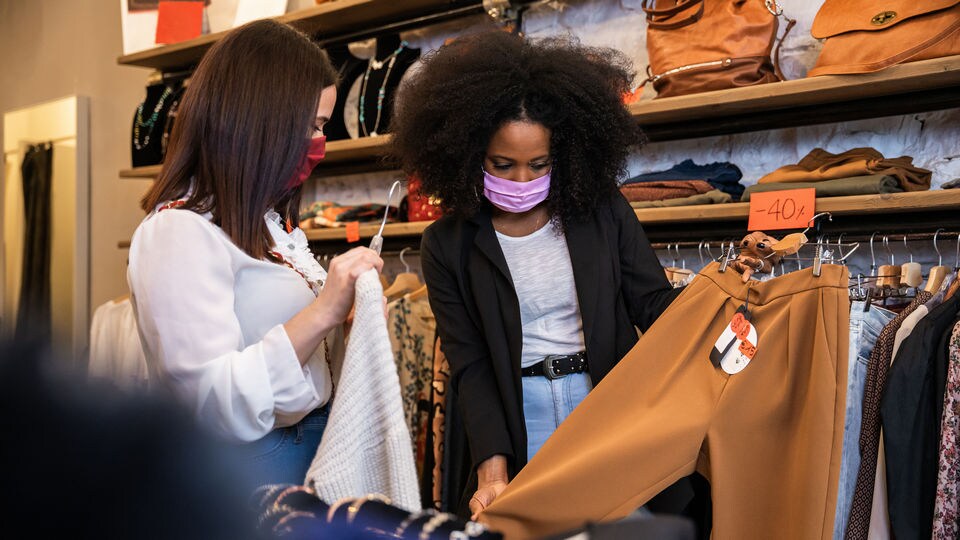Article
What to Expect on Super Saturday 2021

For retailers, the finish line to this busy and unpredictable holiday season is in sight. Super Saturday is right around the corner, bringing with it the last full shopping week before Christmas Day. U.S. Retailers have had to adapt and adjust continuously over the past two years — especially during the two holiday seasons touched by COVID-19 so far — and this year’s Super Saturday (Dec. 18) will be no exception.
Here’s what U.S. retailers can expect on the predicted second busiest in-store shopping day of the holiday season.
Five Things Retailers Should Know
Shipping delays and cut-offs will drive shoppers to brick-and-mortar stores.
Much like last year, the ongoing pandemic is likely to lead to overloaded delivery options. The same can be said about product availability due to supply chain issues. The USPS recommends Retail Ground orders be sent by Dec. 15 for delivery by Christmas, UPS recommends Dec. 16, FedEx recommends Dec. 9, and DHL recommends Dec. 11. Come Super Saturday, the only remaining delivery options will be specialized express services and Amazon Prime (for those who have it) — even though Christmas will still be a week away.
Because shoppers will no longer be able to buy gifts online, they will have to head to store locations to pick up any last-minute gifts they haven’t already ordered. They may also be nervous about orders not arriving in time and opt to buy backup gifts in person.
Stores are going to be busy, despite lingering concerns about the safety of in-store shopping.
In our 2021 holiday consumer sentiment survey, 63% of U.S. consumers said they were concerned or very concerned about shopping in-store, but more than half also indicated they planned to shop in stores during the holiday season. Widely noted supply chain issues will likely contribute to even more shoppers heading into stores than anticipated on Super Saturday as they realize they need more gifts for loved ones.
The extra people buying last-minute gifts and preparing for inevitable missed deliveries will tax already-understaffed stores. With the current labor shortage hitting retailers hard, analyzing store traffic data and making projections that help optimize staffing will be crucial.
Most shoppers who go into stores are doing so because they want to see and touch products.
According to our 2021 holiday consumer sentiment survey, 65% of U.S. consumers plan to shop in-store this holiday season for product-related reasons, like browsing for gift ideas or seeing and touching products before buying. That means stores with fluid and streamlined in-store experiences that allow customers to find products on the floor will be more successful.
Stock replenishment should be top of mind on Super Saturday to ensure that the items people need are always available on the shelf. Item-level inventory can help with this endeavor so that customers know whether the items they want are in stock and associates can find these items quickly.
Demand for help on the floor will likely hit record highs, so confirming staff schedules to ensure there are enough associates to help customers is key.
Managers may want to try having “commitment conversations” with staff members leading up to Super Saturday. Speak to employees about their holiday work schedules and have them confirm the days they are working. This method can increase a sense of commitment to workers’ schedules and reduce no-shows on critical days.
Execution of Buy Online, Pickup in Store (BOPIS) will be crucial.
With all the concerns outlined above, BOPIS and other store pickup options will likely make up a large portion of sales on Super Saturday. Our survey found that 42% of shoppers say they’ll use BOPIS for their holiday shopping and 44% say they’ll use curbside pick-up — 9% and 12% increases from 2020, respectively.
Staffing BOPIS programs appropriately can be challenging, but it’s necessary for seamless execution. Delivering on in-store omnichannel programs is crucial as customers opt for BOPIS because it:
- Guarantees their items are in stock.
- Simplifies their trips.
- Limits possible COVID-19 and flu exposure.
Failure to meet the above needs may result in dissatisfied shoppers.
Luckily, retailers can make efforts to meet this surge in pick-up demands. One way to prepare is to forecast units to create a labor budget that factors in the boost in BOPIS orders. Forecasting may be difficult given the uncertainty of the pandemic, but using 2019 as a baseline with 2021’s year-to-date numbers can help guide these calculations.
Takeaways
While the above may seem daunting, the good news is that retail analytics technology has made these kinds of changes more manageable than ever before. U.S. Retailers that use the tools at their disposal by forecasting accurately, staffing accordingly, and focusing on delivering the shopping experiences that customers want will see the reward: another successful holiday season.
Explore Related Topics

